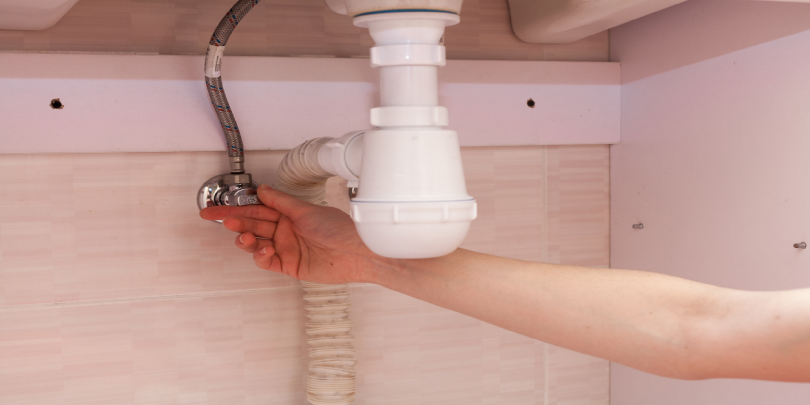
Knowing Your Water Valve Locations Is Invaluable in an Emergency
Shutting off the water source is the first thing property owners should do when a pipe bursts, appliance overflows, sewage backs up, or a plumbing leak emerges. To do so, it is critical to know the location of isolation and main water shut-off valves and how to shut them off before an emergency occurs. That’s why Mr. Rooter Plumbing of Southeast Georgia is here to help you locate your water valves today!
How To Locally Shut Off the Water
Mapping your plumbing valve locations and learning how to shut them off can be a lifesaver when water is rushing into your home.
It is helpful to note that there are two types of water valves:
- Isolation shut-off valves, which connect to specific faucets/areas.
- The main shut-off valve, which shuts off water to the entire plumbing system.
Depending on the situation, it can be beneficial to know exactly where your isolation and main water valve are hiding. Let’s discuss both options in greater detail!
How To Find Local/Isolation Valves
Isolation/service valves are typically located near the plumbing fixture (toilet, shower head, washer) they control. They can switch off specific plumbing sections without impacting the water supply to other appliances. Most modern homes have separate water valves for each plumbing fixture. They are often the quickest and easiest option to stop water when a specific plumbing fixture starts leaking, spraying, or gushing water.
Local water valves also allow homeowners to fix, replace, or repair isolated fixtures without having to turn off the main water valve that controls the entire plumbing system and water supply. Local valves are usually located underneath/behind the toilet, bathtub, dishwasher, or shower. They are also often found on the wall. The next time you use your washing machine, toilet, or sink, track the pipes entering your fixture back to the valve.
There should be separate hot and cold-water supply lines with separate shut-off valves for showers, sinks, and dishwashers. Toilets tend to have a single, cold water shut-off valve. You should be able to shut off the isolation valve by twisting the handle valve clockwise. This action should bring the water flow to a halt so that you can call a plumber to address the issue.
The Different Kinds of Isolation Valves
There are several different types of isolation valves. They primarily serve the same purpose and function similarly, notwithstanding minor variations in design. They are:
- Gate/Round “Wheel” Water Valve – This valve involves lowering a brass gate into a slot and should remain completely on or off.
- Ball Handle Valve – This valve entails a ball with a hole that you can pivot into the right position. Simply turn the lever until it is perpendicular to the pipe to turn it off or turn the lever parallel to the piping to turn it on.
- Compression Valve – Also known as a stop valve, this type uses a rubber gasket to stop the water flow. Turn the handle right to shut off the water supply and loosen it left to turn it on.
Where To Find the Main Water Shut-Off Valve
Unfortunately, main water shut-off valve locations vary from property to property. Because there’s no set spot, you may need to poke around your property. The incoming water line usually enters through the front side foundation. A good detective strategy is to follow this line to the water meter. The main shut-off valve should be nearby – look for a red or green handle.
Searching for your main water valve? We recommend checking your:
- Basement or crawlspace
- Garage
- Near water heaters and external faucets
- Side yard or backyard
Older homes often have underground shut-off valves buried under a round or rectangular metal cover near the property line. You may need pliers or a pentagon socket wrench to remove the cover’s security bolt. Many valve covers also require inserting a meter key into a keyhole. Once you get the cover off, twist the water valve clockwise with an adjustable wrench. This should turn off the water supply.
The Mr. Rooter Plumbing of Southeast Georgia Difference
Don’t let yourself be frantically running around your home as water pours into your kitchen, bathroom, or living room during a plumbing fiasco. Prepare yourself by knowing your shut-off valves’ locations and how to turn off your water supply in an instant. Acting quickly to find and use the main water shut-off valve can mitigate property damage significantly.
If you still can’t find your main water shut-off valve, reach out to Mr. Rooter without delay! Our customer service team is on standby 24/7 to assist with plumbing emergencies. We’ll send a plumbing specialist to your property to take care of your situation promptly!
Schedule an emergency plumbing service today by calling!

